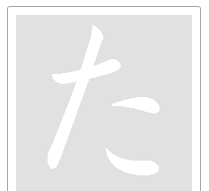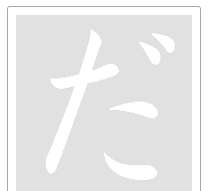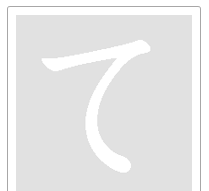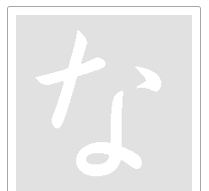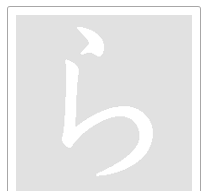 |
||||
 |
||||
Hiragana-5 |
|||||||||||||||||||||
|
Now, the next phrase: いいえ、どういたしまして. |
|||||||||||||||||||||
| え e
This is how to draw the character え. It is composed of two strokes.
え is the hiragana equivalent to エ in katakana, so it is pronounced e. いいえ should, therefore, read as iie. |
|
||||||||||||||||||||
| た ta
This is how to draw the character た. It is composed of four strokes.
た is the hiragana equivalent to タ in katakana, so it is pronounced ta. |
|
||||||||||||||||||||
| だ da |
|
||||||||||||||||||||
| て te
This is how to draw the character て. It is composed of a single stroke.
て is the hiragana equivalent to テ in katakana, so it is pronounced te. |
|
||||||||||||||||||||
| で de
With
two dots, て becomes で,
which is pronounced de. |
|
||||||||||||||||||||
|
In さようなら, you have not learned な and ら yet. Practice how to write な and ら on your PC, following the video. |
|||||||||||||||||||||
|
な na
This is how to draw the character な. It is composed of four strokes.
な is the hiragana equivalent to ナ in katakana, so it is pronounced na. |
|
||||||||||||||||||||
| ら ra
This is how to draw the character ら. It is composed of two strokes.
ら is the hiragana equivalent to ラ in katakana, so it is pronounced ra. Now, you should be able read さようなら as sayoonara. Notice that, here again, う is used for elongation of the preceding yo sound. Write
さようなら
in the below window. Open
your textbook (Step Up Nihongo) to Lesson 2 and read the Kihon
Kaiwa many times until you become able to read them smoothly. |
|
||||||||||||||||||||
 |
|||||||||||||||||||||



